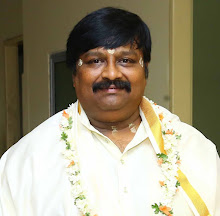
The Bhagavad Gita is the most famous, and widely-read scripture of ancient India dating back to 3100 B.C. It is a university by itself. If any person anywhere in the world is talking about the way of life he is referring to Gita alone. The Bhagavad Gita, the Upanishads and the Brahma Sutras form the three principal texts that define and capture the essence of Hinduism. In the Gita the Supreme is the pure Self, unaffected by any action or experience, detached, and unconcerned. He is the transcendental, the cosmic, and the individual reality that not only supports but also governs the whole cosmic action. He is responsible for the creation, preservation, and destruction of the universe. The Gita is a comprehensive treatise on yoga which includes various phases of the self's development and its final union with the Divine. The Gita is the epitome of the Vedas. It is spontaneous. It is in a form at once divinised and humanized. It is also the purest milk drawn from the udders of the most illumining Upanishads to feed and nourish the human soul. The Gita demands man's acceptance of life and reveals the way to achieve the victory of the higher Self over the lower self by the spiritual art of transformation: physical, vital, mental, psychic and spiritual. The Gita embodies the soul-wisdom, the heart-love, the mind-knowledge, the vital-dynamism and the body-action. The Gita is unique. It is the Scripture of scriptures. Because it has taught the world that the emotion pure, the devotion genuine can easily run abreast with the philosophy solid, the detachment dynamic. The Gita is an episode in the sixth book of the Mahabharata. The main story revolves around a giant rivalry between two parties of cousins. Their ancestral kingdom was the apple of discord. This rivalry came to its close at the end of a great battle called the Battle of Kuruksetra.
Santanu had two wives: Ganga and Satyavati. Bhisma was born from the union of Santanu and Ganga; Citrangada and Vicitravirya from that of Santanu and Satyavati. Citrangada died issueless. Vicitravirya's two wives were Ambika and Ambalika. Dhritarastra was the son of Ambika and Vicitravirya; Pandu, the son of Ambalika and Vicitravirya. Dhritarastra's hundred sons were the Kauravas; Pandu's five sons, the Pandavas. Dhritarastra the elder of the two brothers was blind and so was not qualified to inherit the throne. So Pandu ascended to the throne and reined a number of years, offering the utmost satisfaction to his subjects. At the death of Pandu, Dhritarastra was made king as Pandavas were young. After the Kauravas and Pandavas attained proper age the Pandavas were given Indraprasta and Kauravas the Hastinapura to rule. Yudhisthira lost his entire kingdom to the crafty Kaurava brothers in a game of dice, and was ordered by his cousins to go into exile for twelve years and be in hiding for one year. The conflict between the Pandavas and the Kauravas brewed gradually when the Kauravas refused to return the kingdom to the Pandavas and honor the agreement at the end of the thirteenth year. War became eminent when the Kauravas refused to even grant Yudhisthira's reduced demand for a five villages instead of the entire kingdom. As the battle was about to begin, Arjuna, wonders how he could kill his own blood relatives, teachers and close friends. He asks Krishna, who happened to be his charioteer, this question. The Bhagavad Gita begins here and ends with Krishna convincing Arjuna that it was his duty to fight.
There are seven hundred verses in the Gita, divided into eighteen chapters. About six hundred are the soul-stirring utterances from the divine lips of Lord Krishna, and the rest are from Arjuna, Sanjaya (the charioteer of Dhritarastra, who reports to him the events of the war) and Dhritarastra. Each chapter reveals a specific teaching of a particular form of Yoga.

No comments:
Post a Comment